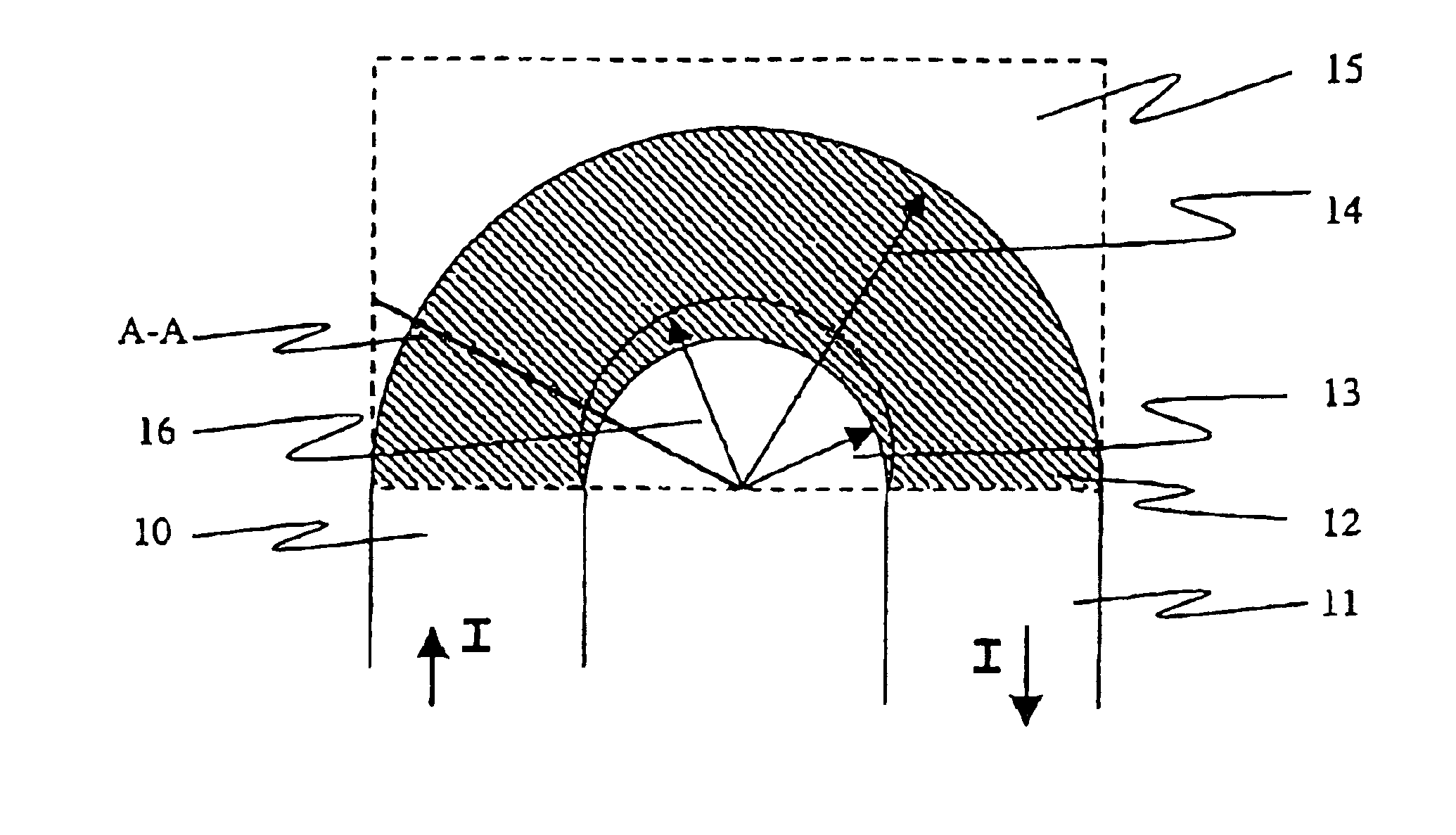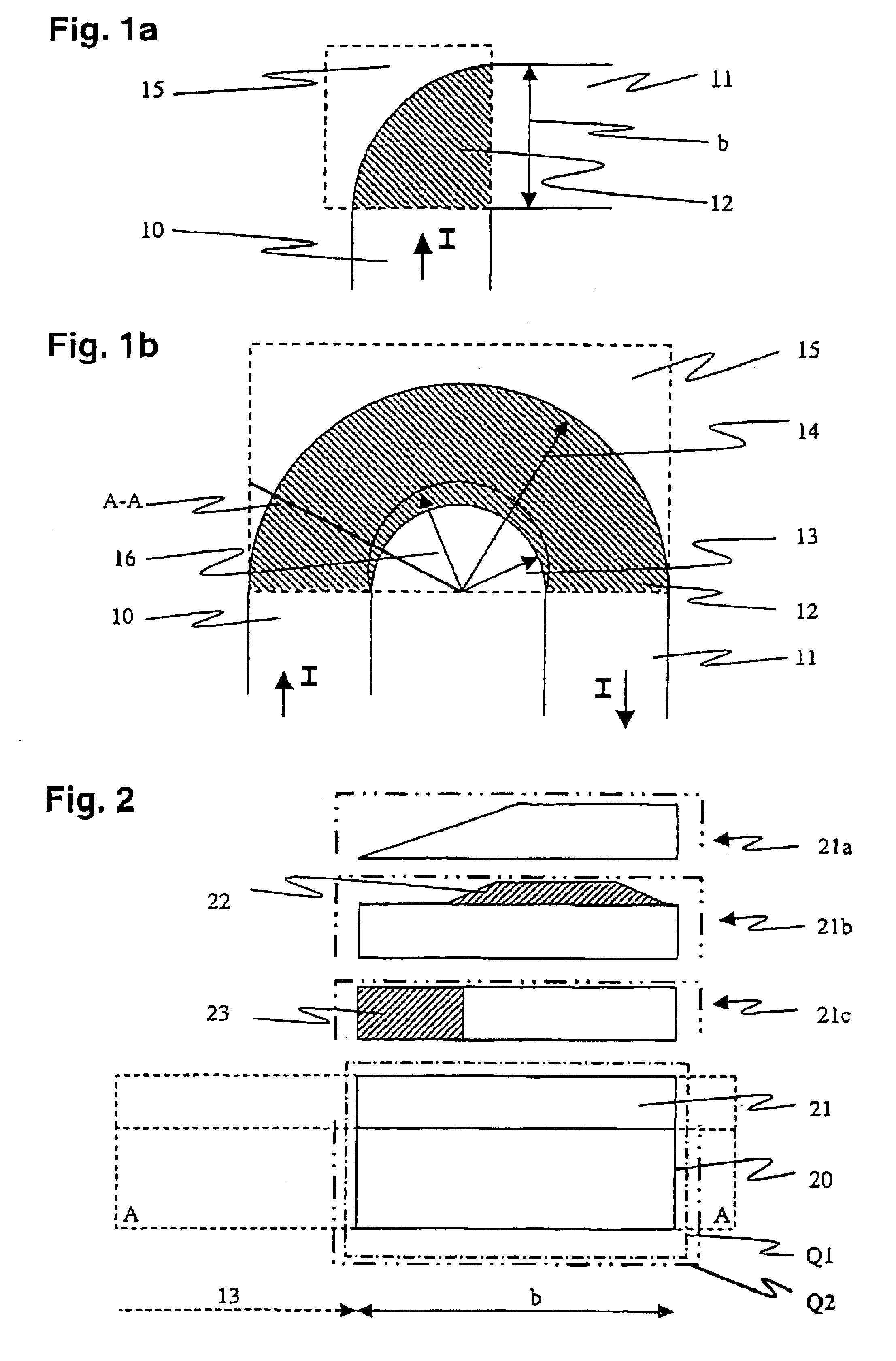Resistive superconducting current limiter
a current limiter and resistive technology, applied in resistor details, digital storage, instruments, etc., can solve problems such as worsening space utilization, and achieve the effect of reducing current density peaks
- Summary
- Abstract
- Description
- Claims
- Application Information
AI Technical Summary
Benefits of technology
Problems solved by technology
Method used
Image
Examples
Embodiment Construction
[0016]Resistive current limiters based on high-temperature superconductors are preferably produced in the form of flat modules with an electrically insulating mount or substrate, and conductor tracks applied on both sides of it. The latter comprise a conductor assembly formed from a high-temperature superconductor and a metallic electrical bypass composed of silver and / or steel. During rated operation, a rated current IN flows through the superconductor. When limiting occurs, that is to say when the rated current has risen above the critical current IC of the superconductor and a voltage drop occurs in the superconductor, the bypass carries the majority of the fault current, thus reducing the load on the superconductor. The following analyses are based on the assumption that the superconductor forms a first layer, and that the bypass forms a second layer, applied to the superconductor.
[0017]In general, the conductor tracks are in the form of progressive or rectangular spiral meander...
PUM
 Login to View More
Login to View More Abstract
Description
Claims
Application Information
 Login to View More
Login to View More - R&D
- Intellectual Property
- Life Sciences
- Materials
- Tech Scout
- Unparalleled Data Quality
- Higher Quality Content
- 60% Fewer Hallucinations
Browse by: Latest US Patents, China's latest patents, Technical Efficacy Thesaurus, Application Domain, Technology Topic, Popular Technical Reports.
© 2025 PatSnap. All rights reserved.Legal|Privacy policy|Modern Slavery Act Transparency Statement|Sitemap|About US| Contact US: help@patsnap.com


